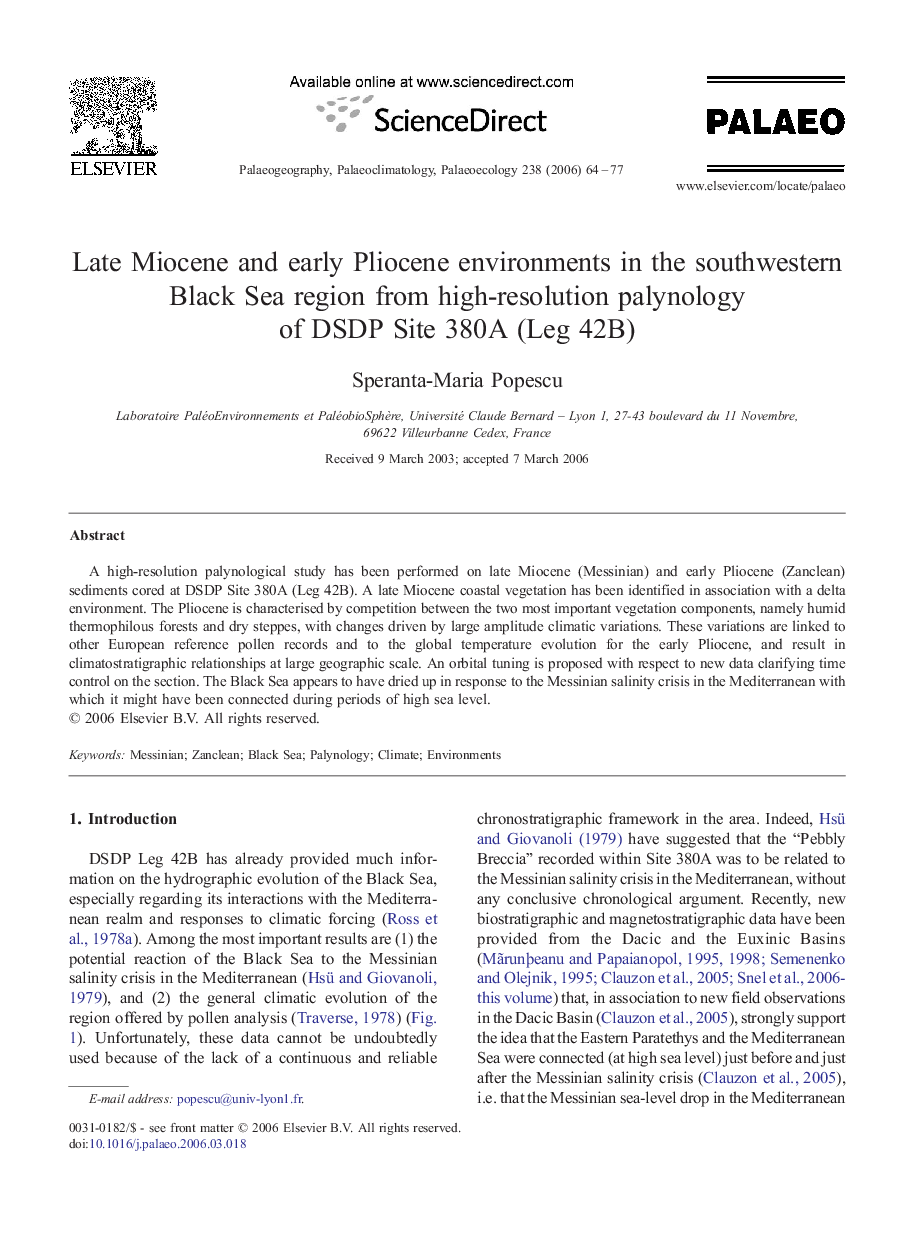| Article ID | Journal | Published Year | Pages | File Type |
|---|---|---|---|---|
| 4469328 | Palaeogeography, Palaeoclimatology, Palaeoecology | 2006 | 14 Pages |
A high-resolution palynological study has been performed on late Miocene (Messinian) and early Pliocene (Zanclean) sediments cored at DSDP Site 380A (Leg 42B). A late Miocene coastal vegetation has been identified in association with a delta environment. The Pliocene is characterised by competition between the two most important vegetation components, namely humid thermophilous forests and dry steppes, with changes driven by large amplitude climatic variations. These variations are linked to other European reference pollen records and to the global temperature evolution for the early Pliocene, and result in climatostratigraphic relationships at large geographic scale. An orbital tuning is proposed with respect to new data clarifying time control on the section. The Black Sea appears to have dried up in response to the Messinian salinity crisis in the Mediterranean with which it might have been connected during periods of high sea level.
